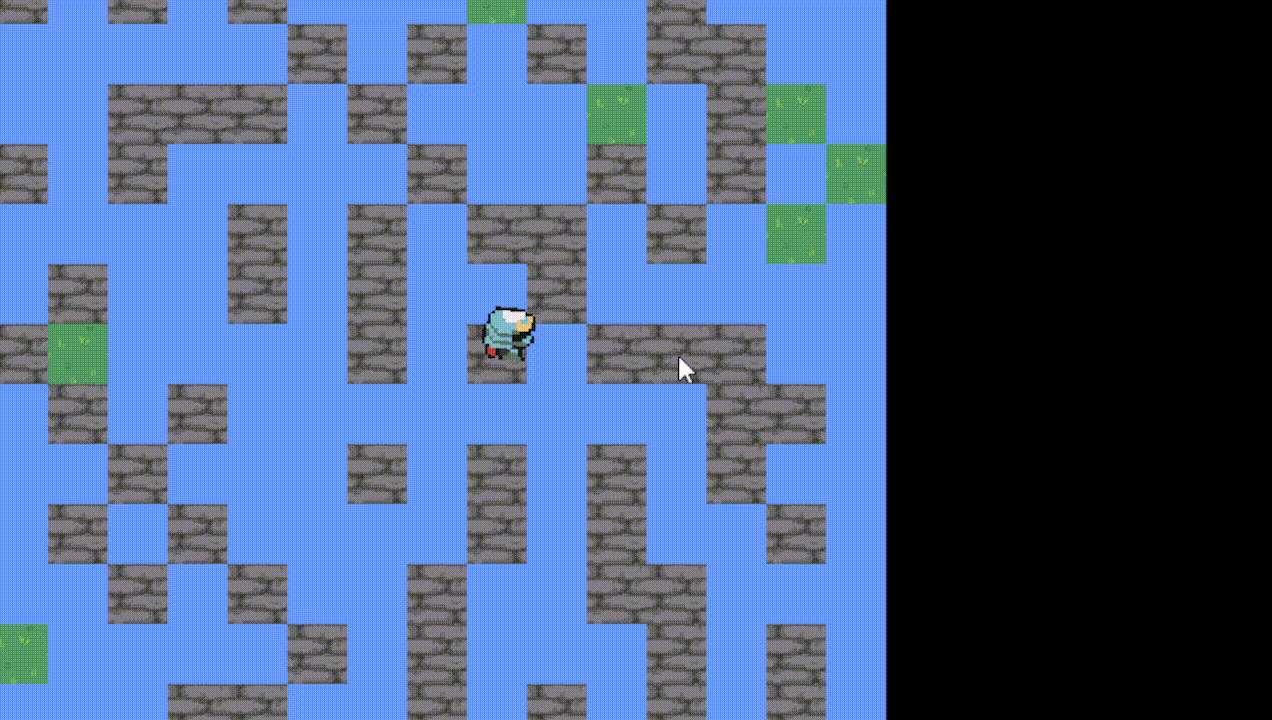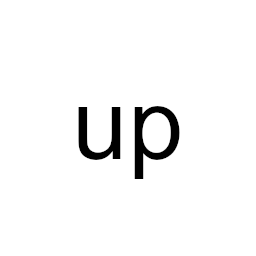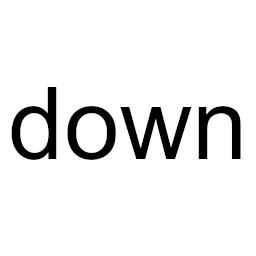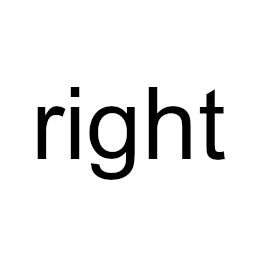I've created a class called DegreeAnimation, which is basically an implementation of my CustomAnimation class, but works with other directions, there are 2 constructors for this class, one where the algorithm sets all the ranges by themselves and assigning textures to them, starting from east and ending at the topmost of southeast, and another one that takes in ranges manually when it's needed, like in mine, as i need to divide the ranges like this and not like this:
 Even so, since i cant just do 240° - 70°, as it would wrap backwards, so there are 2 ranges for the same texture, also that with the current implementation, there are small gaps inbetween like 60°-61° but that isn't really the problem here as i will fix them sooner or later, the problem here is that, in order to properly render them as i want, there needs to be 3 variables, the
Even so, since i cant just do 240° - 70°, as it would wrap backwards, so there are 2 ranges for the same texture, also that with the current implementation, there are small gaps inbetween like 60°-61° but that isn't really the problem here as i will fix them sooner or later, the problem here is that, in order to properly render them as i want, there needs to be 3 variables, the textureRotation, and whether it will be flipped or not all inside the function: flipX, flipY, and initial values for the assets namely as, needsFlipX, needsFlipY and initialRotation (the direction the sprite looks at in its texture form), also, in this code i have converted +-180 degree notation to +360 cause that's what atan2 works with. I am also unable to just hardcore those values, as i actually want some degree of rotation feeling in my game, I'm still yet to implement the getter values of initialRotation, needsXFlip and needsYFlip in the CustomAnimationAndRange data class, but please see the code as if those were implemented. A video to show what happens, and i guess you can imagine what I actually intended.
Tileset: https://stealthix.itch.io/rpg-nature-tileset Player: https://pixel-boy.itch.io/ninja-adventure-asset-pack
outside my most probably wrong range sets, you must have noticed that something is very out of the place, and I hereby ask for help on fixing it. Also, one has to absolutely call thattexture.flip(false,false) as it carries on due to referencial implementation of this in java. Also, there are many stuff that I explicitly left out broken as i was going to delete them later after i implemented this, but I couldnt.
class DegreeAnimation {
/**
* I literally have no idea why some require flips and some don't
*/
data class CustomAnimationAndRange( val customAnimation: CustomAnimation,
val range: ClosedFloatingPointRange<Float>,
val initialRotation: Int = 0,
val needsXFlip : Boolean = false,
val needsYFlip : Boolean = false)
var internalTimer: Float
get() {
return animations[0].second.internalTimer
// will crash if the index-0 of the animationsTemp is null
}
set(value) {
animations[0].second.internalTimer = value
}
var currentFrame: Int
get() = animations[0].second.currentFrame
set(value) {
animations[0].second.currentFrame = value
}
val frameAmountCache: Int
get() = animations[0].second.frameAmountCache
val timingArray: Array<Float>?
get() = animations[0].second.timingArray
val isOneTexture: Boolean
get() = animations[0].second.isOneTexture
val atLastTexture : Boolean
get() = animations[0].second.atLastTexture
var isLooping : Boolean
get() = animations[0].second.isLooping
set(value)
{
animations[0].second.isLooping = value
}
internal val cachedTimePerFrame: Array<Float>?
get() = animations[0].second.cachedTimePerFrame
var paused : Boolean
get() = animations[0].second.paused
set(value) {
animations[0].second.paused = value
}
var animations : Array<Triple<ClosedFloatingPointRange<Float>, CustomAnimation, Int>>
private var delegate : Sprite? = null
val rotation : Float?
get() {
if(delegate == null) return null
if(delegate!!.rotation < 0)
return delegate?.rotation!! + 360
else
return delegate?.rotation
}
/**
* if this isn't updated in getTexture for some reason there will be huge discrepancies
*/
var textureRotation : Float = 0f
get(){
return field
}
set(value) {
field = value
}
/**
* The first element of animation is taken as the ultimate example for al land will be used for so
* The arguments go from counter-clockwise, starting at east (0°) ending at topmost of south-east (360°)
*/
fun update(delta: Float)
{
animations[0].second.update(delta)
}
var usesAutoDegree = false
/**
* if flipOver180Textures is set to true, ABSOLUTELY call flip(false, false) AFTER **USING** the texture
*/
fun getTexture(rotation : Float? = this.rotation, flipOver180Textures: Boolean = false) : TextureRegion
{
rotation!!
for(i in animations.indices)
{
if(animations[i].first.contains(rotation))
{
var initial = animations[i].third
textureRotation = initial + rotation - animations[i].first.start
var outputNeedsFlipX : Boolean = ?
var outputNeedsFlipY : Boolean = ?
if(rotation > 180 && flipOver180Textures)
return animations[i].second.
getKeyFrame(currentFrame).apply { //i havent integrated needsXFlip to the animation[] yet
this.flip(false.xor(animations[i].needsXFlip), true.xor(animations[i].needsYFlip)) } // please act as if
else // it has been
return animations[i].second.getKeyFrame(currentFrame)
}
}
for(i in animations.indices) // this tries to fill in the gaps after automatic assignation or something else
{
if(i != animations.size-1)
{
if(animations[i].first.endInclusive.rangeTo(animations[i+1].first.start).contains(rotation))
{
if(rotation > 180 && flipOver180Textures)
return animations[i].second.getKeyFrame(currentFrame).apply { flip(true, true) }
else
return animations[i].second.getKeyFrame(currentFrame)
// todo: implement rounding for inbetween i.end, i+1.start and return it like so
}
}
}
return Globals.ItemTextures["null"]!! // if none found
}
constructor(sprite: Sprite? = null, vararg animation: CustomAnimation)
{
for(i in 1 until animation.size)
{
if(!animation[i].timingArray.contentEquals(animation[0].timingArray!!))
{
Console.log("the length of animation aren't the same, or they aren't equal to the animation[0]")
}
}
var animationsTemp : Array<Triple<ClosedFloatingPointRange<Float>, CustomAnimation, Int>?> = Array(animation.size){null}
var partSize = 360f/animationsTemp.size
for(i in animationsTemp.indices)
{
if(i == 0)
{
animationsTemp[0] = Triple(0f.rangeTo((i+1)*partSize), animation[i], 0)
}
else
{
animationsTemp[i] = Triple(((i*partSize)+1).rangeTo((i+1)*partSize), animation[i], 0)
}
}
var tempIterator = animationsTemp.iterator()
animations = Array(animationsTemp.size){tempIterator.next()!!}
delegate = sprite
usesAutoDegree = true
}
constructor(sprite: Sprite?,
vararg customAnimationAndRange: CustomAnimationAndRange)
{
usesAutoDegree = false
for(i in 1 until customAnimationAndRange.size)
{
if(!customAnimationAndRange[i].customAnimation.timingArray.
contentEquals(customAnimationAndRange[0].customAnimation.timingArray!!))
{
Console.log("the length of animation aren't the same, or they aren't equal to the animation[0]")
}
}
var animationsTemp : Array<Triple<ClosedFloatingPointRange<Float>, CustomAnimation, Int>?>
= Array(customAnimationAndRange.size){null}
for(i in animationsTemp.indices)
{
animationsTemp[i] = Triple(customAnimationAndRange[i].range,
customAnimationAndRange[i].customAnimation,
customAnimationAndRange[i].initialRotation)
}
var tempIterator = animationsTemp.iterator() // this part is not required, but I want a non-nullable animation
animations = Array(animationsTemp.size){tempIterator.next()!!} // collection, also filterNotNull might also work
delegate = sprite // but I mean we are sure that they are non-nullable, so we use !!
} // so fearing filterNotNull slipping some stuff is useless
}
this code assumes that the properties of all CustomAnimations are the same other than textures so it takes [0] as the ultimate example, if requested, I will post the details of my CustomAnimation class, I didnt post it at the first place because this wall of text is littered enough, also that I think that the naming convention of that class is well enough, the most imporant of them all is the GetTexture() function, and this is what my main class looks like if I only took things related to this:
player = Entity() // Entity : Sprite
degreeAnimation = DegreeAnimation(player,
DegreeAnimation.CustomAnimationAndRange(
Globals.Animations["player.walkRight"]?.invoke()!!,
0f.rangeTo(60f)),
DegreeAnimation.CustomAnimationAndRange(
Globals.Animations["player.walkRight"]?.invoke()!!,
300f.rangeTo(360f)),
DegreeAnimation.CustomAnimationAndRange(
Globals.Animations["player.walkUp"]?.invoke()!!,
60f.rangeTo(120f), 90, needsXFlip = false, true),
DegreeAnimation.CustomAnimationAndRange(
Globals.Animations["player.walkLeft"]?.invoke()!!,
120f.rangeTo(240f), 300),
DegreeAnimation.CustomAnimationAndRange(
Globals.Animations["player.walkDown"]?.invoke()!!,
200f.rangeTo(300f), 270)
)
render(delta: Float)
{
var aaa = degreeAnimation.apply { update(delta) }
mainBatch.draw(aaa.getTexture() , player.x, player.y,
player.getWorldOriginX * player.readOnlyScaling.x , player.getWorldOriginY * player.readOnlyScaling.y,
player.getWorldSizeX, player.getWorldSizeY, player.scaleX,
player.scaleY, aaa.textureRotation)
aaa.getTexture().flip(false,false)
player.setOriginCenter()
player.rotation = degreesToMouse(player)
}
fun degreesToMouse(arg: Entity) : Float
{
var radians = atan2(Gdx.input.y.toDouble() - player.screenPosition.y + player.originY * player.readOnlyScaling.y /*+ player.originY * player.readOnlyScaling.y*/,
Gdx.input.x.toDouble() - player.screenPosition.x + player.originX * player.readOnlyScaling.x /*+ player.originX * player.readOnlyScaling.x*/)
return -(radians * (180 / Math.PI)).toFloat()
}





